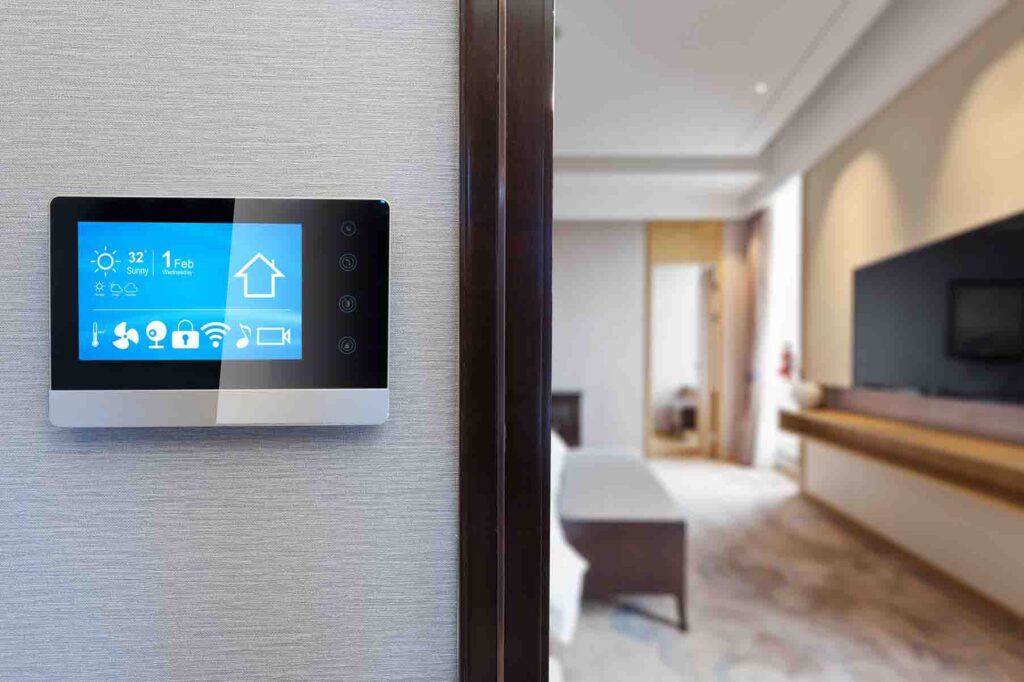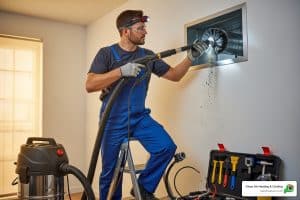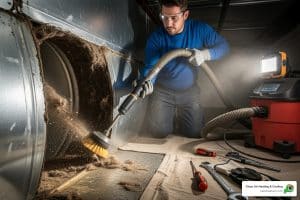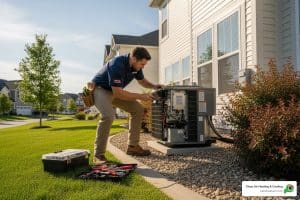Choosing the right thermostat for your HVAC system is a crucial decision for the comfort of your home and the efficiency of the system. A thermostat acts as the control center for your home’s heating and cooling, allowing you to regulate the temperature and optimize energy consumption. With a plethora of options available on the market, selecting the perfect thermostat can be a daunting task. But don’t worry… the pros at Clean Air Heating & Cooling are here to walk you through the essential factors to consider when choosing a thermostat for your HVAC system!
How Does Your Thermostat Work?
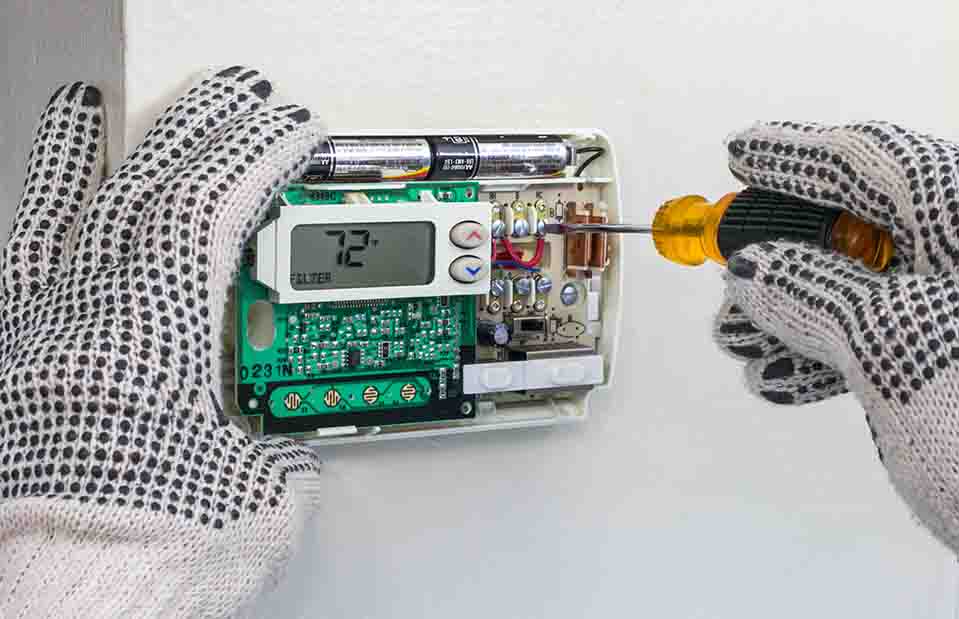
At its core, a thermostat is a temperature-sensitive device that regulates your HVAC system to maintain the desired indoor temperature. It works by sensing the current temperature in your home and comparing it to the temperature setting you’ve chosen. When the actual temperature deviates from your desired setting, the thermostat sends signals to your HVAC system to either heat or cool the air until the set temperature is reached. Once that temperature is achieved, the thermostat instructs the HVAC system to maintain it, cycling on and off as needed. This simple yet effective feedback loop is the fundamental principle behind how thermostats work to keep your living space at the comfort level you desire.
The Importance Of Compatibility

Thermostat compatibility with different types of HVAC systems is an important consideration when selecting the right thermostat for your home. The type of HVAC system you have, whether it’s a central heating and cooling system, a heat pump, a furnace, or something else, will determine which thermostat is compatible. Each HVAC system requires specific wiring and voltage requirements, and not all thermostats are designed to work with every system. Therefore, it’s essential to verify the compatibility of your chosen thermostat with your HVAC system to ensure seamless and efficient operation.
Incompatibility can result in heating or cooling issues, increased energy consumption, or even potential damage to your HVAC equipment. Older systems may not be compatible with smart thermostats, and some features of more advanced thermostats may not be compatible with all systems. Check your HVAC system to determine which of the following features it has before considering the different types of thermostats:
- Central Heating & Cooling
- High-Voltage Wires
- Heat Pump
- Furnace
- Electric Baseboards
- Mini-Splits
Types Of Thermostats
There have been many innovations in the design and functionality of thermostats in recent years. Depending on the type of HVAC system you have, its age, and other factors, you may be able to install a new thermostat to maximize your system’s efficiency, as well as your own convenience and comfort. With a wide array of thermostat options available, however, it can be challenging to navigate the choices. Below are some of the most popular options to consider for your HVAC’s thermostat.
Smart Thermostats
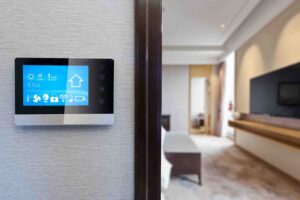
Smart thermostats for HVAC systems are cutting-edge devices that combine advanced technology and connectivity to provide unprecedented control and energy management for your home’s heating and cooling. These intelligent devices are designed to learn your temperature preferences and daily routines, allowing them to make automatic adjustments for optimal comfort and energy efficiency. What sets them apart is their ability to connect to the internet via Wi-Fi, enabling you to control your HVAC system remotely through a smartphone app or integrate it into your smart home ecosystem. Smart thermostats also often offer energy usage insights, helping you reduce consumption and save on utility bills while enjoying a more comfortable living environment.
Programmable Thermostats
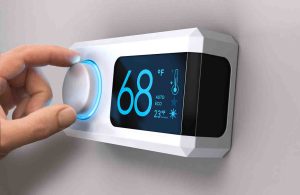
The main difference between programmable thermostats and smart thermostats lies in their level of automation and connectivity. Programmable thermostats allow you to set temperature schedules based on your daily routines but require manual programming (though remotes are typically included). In contrast, smart thermostats go a step further by using sensors and Wi-Fi connectivity to learn your preferences and automatically adjust settings. While both types aim to enhance energy efficiency, smart thermostats offer a higher degree of automation and connectivity. However, if you do not need or want the ability to manage your thermostat through a smartphone, programmable thermostats will be a better option for saving you money and hassle during installation.
Non-Programmable Digital Thermostats
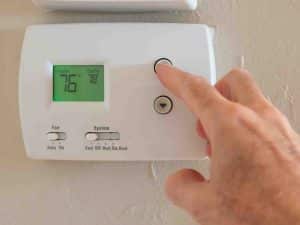
Non-programmable digital thermostats for HVAC systems are user-friendly and straightforward temperature control devices. These thermostats feature digital displays that make it easy to set and adjust your desired temperature manually. Unlike programmable or smart thermostats, they don’t have scheduling or learning capabilities. Instead, they provide basic, reliable control of your heating and cooling system, allowing you to set a constant temperature, which is maintained until you manually change it. Non-programmable digital thermostats are an excellent choice for individuals with uncomplicated schedules or those who prefer a simple and cost-effective solution for home comfort control.
Mechanical Thermostats
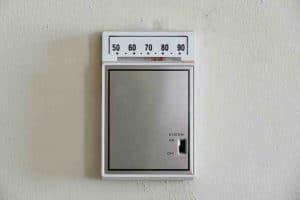
Mechanical thermostats for HVAC systems are the traditional, non-digital temperature control devices. They operate using a mechanical bimetallic coil or strip that expands and contracts in response to temperature changes. When the desired temperature is reached, the coil or strip triggers a mechanical switch to turn the HVAC system on or off. Mechanical thermostats are simple, reliable, and cost-effective, making them a suitable choice for basic temperature control needs. However, they lack the advanced features and energy-saving capabilities found in digital, programmable, and smart thermostats, which offer greater convenience and efficiency.
Determining Thermostat Location
The location of a thermostat within your home is one of the most influential factors in maintaining accurate and efficient temperature control. It should be strategically placed to ensure it accurately reflects the overall comfort level of your living space. Thermostats are not usually in areas that are directly over vents, in direct sunlight, or next to windows because such areas do not provide an accurate representation of the temperature and airflow throughout the entire home.
Below are some of the best tips for thermostat location to help keep your bills low and your comfort high!
- Central Living Spaces: Placing the thermostat in a central living area, like the living room, can provide a more representative reading of the average temperature in your home.
- Interior Walls: Mount the thermostat on an interior wall, away from drafts, direct sunlight, and exterior doors or windows, as these factors can affect its accuracy.
- Eye Level: Install it at eye level, making it easy to read and operate without having to bend down or use a stool.
- Bedroom: If you want to prioritize bedroom comfort, consider installing a separate thermostat in the bedroom area.
- Avoid Hallways: Avoid placing the thermostat in hallways, as they may not reflect the temperature accurately, and the frequent movement of people in and out can lead to unnecessary HVAC system cycling.
- Consider Zoning: For larger homes with multiple HVAC zones, installing a separate thermostat in each zone can provide precise control and energy savings.
Thermostat Upgrades & Installations
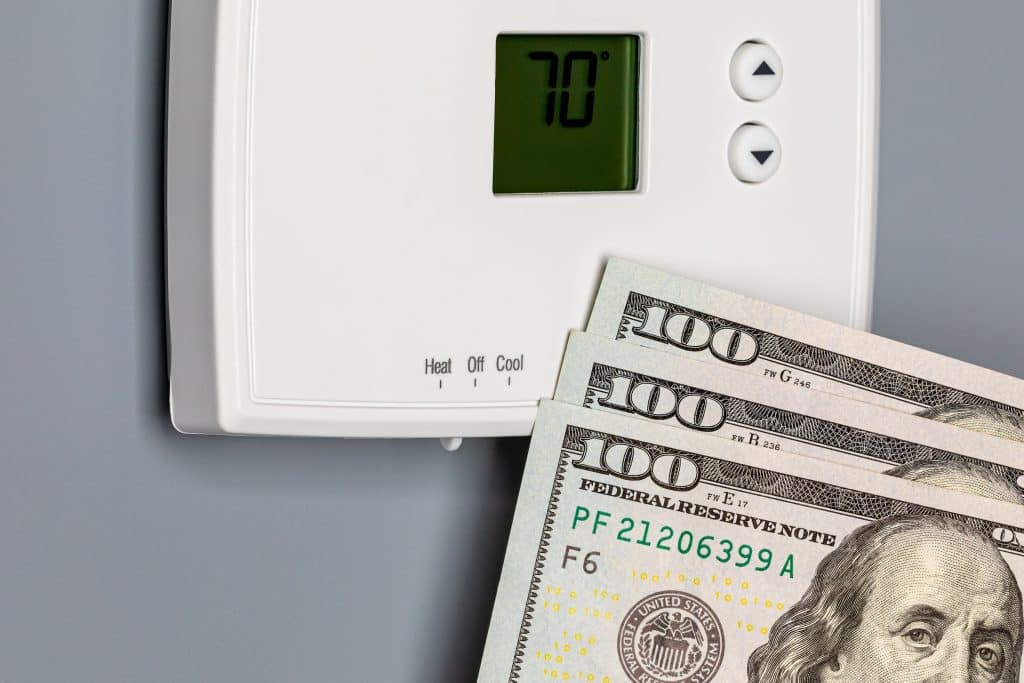
Knowing when to replace or upgrade your old thermostat makes all the difference in efficiency. Several key indicators can suggest it might be time for a change. If you’re experiencing temperature inconsistencies or frequent HVAC system cycling, your thermostat may not be functioning correctly. Older thermostats without advanced features like programmability or Wi-Fi connectivity can limit your ability to optimize energy usage. In such cases, you will notice rising energy bills, which is another sign that your current thermostat is struggling to regulate your HVAC system efficiently.
If you’ve recently upgraded your HVAC equipment, your old thermostat may not be compatible with the new system. Forgetting to upgrade thermostats along with updated equipment is a common mistake that costs homeowners in more ways than one. Ultimately, the decision to replace or upgrade your thermostat should align with your comfort needs and your desire for energy savings and convenience in managing your home’s temperature. If you need help determining when and if you should upgrade your thermostat, call Clean Air or a professional HVAC company near you today for more on installation services!

